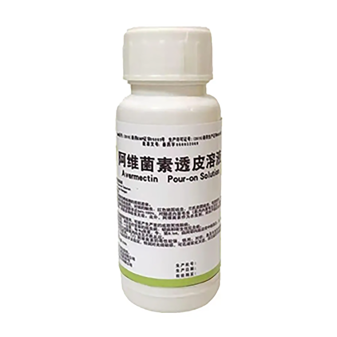- Afrikaans
- Albanian
- Amharic
- Arabic
- Armenian
- Azerbaijani
- Basque
- Belarusian
- Bengali
- Bosnian
- Bulgarian
- Catalan
- Cebuano
- Corsican
- Croatian
- Czech
- Danish
- Dutch
- English
- Esperanto
- Estonian
- Finnish
- French
- Frisian
- Galician
- Georgian
- German
- Greek
- Gujarati
- Haitian Creole
- hausa
- hawaiian
- Hebrew
- Hindi
- Miao
- Hungarian
- Icelandic
- igbo
- Indonesian
- irish
- Italian
- Japanese
- Javanese
- Kannada
- kazakh
- Khmer
- Rwandese
- Korean
- Kurdish
- Kyrgyz
- Lao
- Latin
- Latvian
- Lithuanian
- Luxembourgish
- Macedonian
- Malgashi
- Malay
- Malayalam
- Maltese
- Maori
- Marathi
- Mongolian
- Myanmar
- Nepali
- Norwegian
- Norwegian
- Occitan
- Pashto
- Persian
- Polish
- Portuguese
- Punjabi
- Romanian
- Russian
- Samoan
- Scottish Gaelic
- Serbian
- Sesotho
- Shona
- Sindhi
- Sinhala
- Slovak
- Slovenian
- Somali
- Spanish
- Sundanese
- Swahili
- Swedish
- Tagalog
- Tajik
- Tamil
- Tatar
- Telugu
- Thai
- Turkish
- Turkmen
- Ukrainian
- Urdu
- Uighur
- Uzbek
- Vietnamese
- Welsh
- Bantu
- Yiddish
- Yoruba
- Zulu
Novemba . 14, 2024 07:32 Back to list
gentamicin so4
Gentamicin Sulfate A Critical Perspective on Its Use and Implications
Gentamicin sulfate is an aminoglycoside antibiotic widely utilized in the treatment of various bacterial infections. Discovered in the 1960s, this potent antibiotic has become a cornerstone in the management of gram-negative bacterial infections, particularly those caused by Pseudomonas aeruginosa, Escherichia coli, and Klebsiella species. Despite its efficacy, gentamicin sulfate comes with a set of challenges that healthcare providers must navigate in its clinical use.
Gentamicin works by binding to the 30S ribosomal subunit of susceptible bacteria, ultimately inhibiting protein synthesis. This mechanism is effective against many aerobic, gram-negative organisms and some gram-positive bacteria when combined with other antibiotics. It is often administered parenterally, but can also be used topically or in certain formulations for inhalation and irrigation.
Gentamicin Sulfate A Critical Perspective on Its Use and Implications
However, gentamicin sulfate is not without significant risks, chief among them being nephrotoxicity and ototoxicity. Prolonged use or high doses can lead to damage to the kidneys and hearing loss, which has prompted careful monitoring of drug levels in patients, particularly those with pre-existing kidney conditions, the elderly, and those receiving concurrent nephrotoxic medications. Regular assessments, including serum creatinine levels and urine output monitoring, become crucial in minimizing these adverse effects.
gentamicin so4

Additionally, the emergence of antibiotic resistance poses a significant challenge in the effective use of gentamicin. Bacterial resistance can arise through various mechanisms, including enzymatic modification of the antibiotic, changes in membrane permeability, or alterations in ribosomal binding sites. Consequently, the effectiveness of gentamicin can be compromised, underscoring the need for judicious use of antibiotics and stewardship programs aimed at curbing resistance trends. Clinicians are encouraged to use gentamicin only when necessary and to consider susceptibility testing as part of the routine evaluation of bacterial infections.
Gentamicin sulfate has also found use in veterinary medicine, treating infections in various species, including pets and livestock. However, the implications of antibiotic use extend beyond human health. The presence of gentamicin residues in food-producing animals raises concerns regarding antibiotic residues in the food chain and potential impacts on human health. This has led to stricter regulations and guidelines governing the use of antibiotics in agriculture, emphasizing the need for sustainable and responsible practices.
Another concern associated with gentamicin sulfate use is its interaction with other medications. Due to its narrow therapeutic index, any other nephrotoxic drugs can exacerbate its side effects. Similarly, drugs that affect renal function can alter gentamicin clearance, requiring careful dosage adjustments. This complexity necessitates a collaborative approach among healthcare providers, pharmacists, and patients to optimize treatment planning and minimize adverse outcomes.
As gentamicin sulfate continues to be a staple in treating bacterial infections, education and awareness surrounding its use are essential. Healthcare providers should receive ongoing training on the risks associated with aminoglycosides, resistance patterns, and the principles of antimicrobial stewardship. Furthermore, patients must be informed about the potential side effects and the importance of adhering to prescribed regimens to prevent complications.
In conclusion, while gentamicin sulfate remains an invaluable tool in combating infections, its administration requires a nuanced understanding of its benefits, risks, and the broader implications of antibiotic use. Continuous research and vigilance are necessary to ensure its efficacy in an era increasingly challenged by antibiotic resistance. The balance between effective treatment and safeguarding public health lies in the responsible use of gentamicin sulfate and a commitment to ongoing education in the medical community. By fostering a culture of awareness and responsibility, we can better navigate the complexities of antibiotic therapy in today's healthcare landscape.
-
Guide to Oxytetracycline Injection
NewsMar.27,2025
-
Guide to Colistin Sulphate
NewsMar.27,2025
-
Gentamicin Sulfate: Uses, Price, And Key Information
NewsMar.27,2025
-
Enrofloxacin Injection: Uses, Price, And Supplier Information
NewsMar.27,2025
-
Dexamethasone Sodium Phosphate Injection: Uses, Price, And Key Information
NewsMar.27,2025
-
Albendazole Tablet: Uses, Dosage, Cost, And Key Information
NewsMar.27,2025













